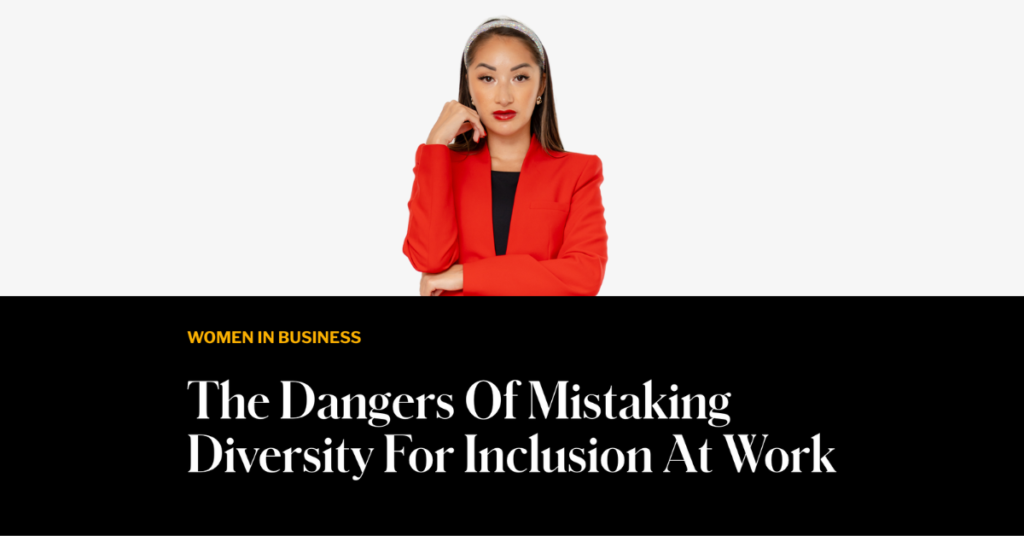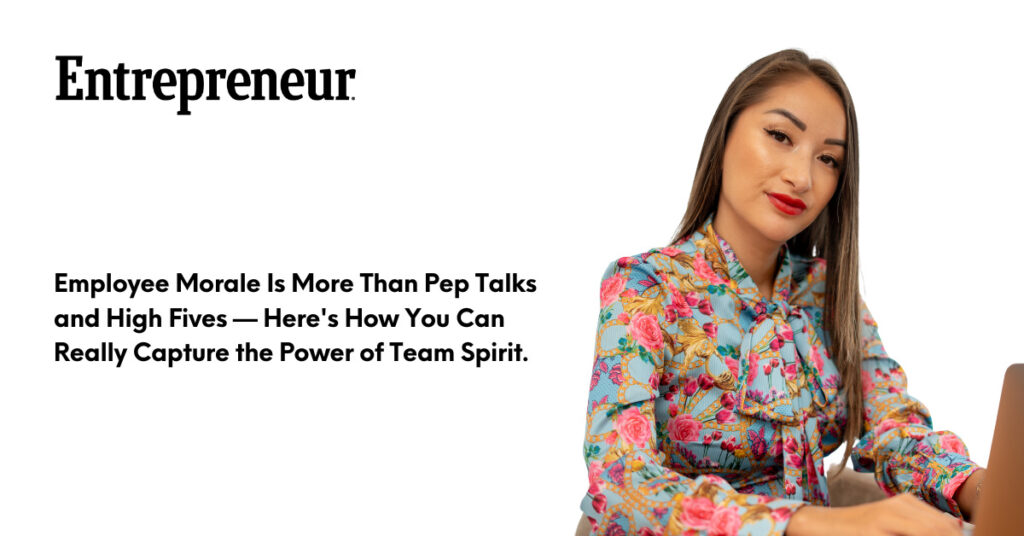Guest writer Lissele Pratt, a luminary with a decorated career in the financial services industry, is a co-founder at Capitalixe. Her achievements includes a Forbes 30 Under 30 accolade and has carved a niche as a thought leader in fintech, recognised by the UK Fintech Awards and featured in the Women in Fintech Powerlist. In this insightful article, Lissele unravels the nuanced difference between diversity and inclusion, shedding light on the often overlooked aspect of making every team member feel valued and heard. With a blend of personal achievements and a deep understanding of corporate dynamics, Lissele offers a compelling call to action for businesses to transcend beyond the surface of diversity and forge genuinely inclusive workplaces.
Diversity. It’s a buzzword plastered on every mission statement and job posting board out there. It’s celebrated as the hallmark of progress, but is diversity alone sufficient to drive meaningful change within our workplaces?
While it’s fantastic to see organisations championing diversity, boasting about their diverse talent pool spanning various backgrounds, cultures, and identities. It’s important to remember that diversity is just one piece of the puzzle.
To truly embrace diversity, we need to understand that it’s not a standalone objective but a part of a larger, more critical initiative: inclusion. Too often, companies confuse the two, leading to a disconnect between intentions and outcomes.
So, before we pat ourselves on the back for our diverse workforce, let’s pause and ask the tough questions: Are we truly fostering inclusion? Or are we merely checking boxes and missing the mark?
Diversity vs Inclusion
Though often tossed around like they’re the same thing, especially in the business world, diversity and inclusion actually mean two entirely different things.
Diversity is all about having different kinds of people in the room, with various backgrounds, identities, and experiences. Inclusion, on the other hand, is about making sure that the diverse group of people in the room all feel respected, valued, and like they truly belong.
Sadly, we’ve seen and heard about this story many times. A company, promoting their commitment to diversity hires individuals from diverse backgrounds. They showcase their diverse workforce like a badge of honour. Yet, behind closed doors, those individuals may feel isolated, unheard, or even marginalised.
The numbers speak volumes. Across various aspects like work-life balance and pay equity, women consistently indicated lower levels of satisfaction compared to their male counterparts in feeling recognised and included. According to a recent study, women were 25% less likely to say they felt comfortable sharing a dissenting opinion and were 20% less likely to say their unique background and identity were valued at their company.
How to inspire inclusion at your workplace
Now that you understand the difference between diversity and inclusion, let’s take a look at some actionable steps you can take to inspire inclusivity at work. Theses include:
Addressing microaggressions head on
For those who aren’t aware, microaggressions are subtle, often unintentional actions or comments that convey hostile, derogatory, or negative messages to individuals based on their membership in a marginalised group. According to McKinsey & Co, women are twice as likely as men to be mistaken for someone junior and to hear comments on their emotional state. For women of colour, the situation is even worse—they’re seven times more likely to be mistaken for someone of the same race and ethnicity.
The impact of these microaggressions goes beyond just confidence—it takes a toll on mental health too. Women who experience these microaggressions are much less likely to feel psychologically safe, which makes it harder for them to speak up, share ideas, or raise concerns. In fact, 78% of women who face microaggressions resort to self-shielding at work, adjusting the way they look or act to protect themselves.
Here’s what you can do about it:
- Communicate unequivocally that microaggressions and any other forms of disrespectful behaviour are unacceptable. A company-wide code of conduct can help spell out the do’s and don’ts, setting the tone for a supportive and respectful environment.
- Many employees don’t even realise when they’re committing microaggressions, let alone how to address them. That’s where quality bias and allyship training come in. Regular sessions and refreshers can help keep everyone on the same page.
- Encourage employees to speak up when they witness microaggressions or other disrespectful behaviours. It might be uncomfortable, but these conversations are crucial for learning and growth.
Fixing the broken rung for women at work
In 2023, for every 100 men promoted from entry level to manager, only 87 women were promoted. This gap is trending the wrong way for women of colour. In 2023, 73 women of colour were promoted to manager for every 100 men, down from 82 women of colour in 2022. As a result of this “broken rung,” women fall behind and can’t catch up. Fixing the broken rung is a tangible, achievable goal. Here are three steps to get started:
- Leaders must implement safeguards to ensure fair evaluation criteria and prevent bias from seeping into decision-making processes. Whether it’s through bias reminders before performance evaluations or appointing a bias monitor, it’s essential to keep promotions discussions focused on merit alone.
- Investing in career advancement opportunities for women, especially women of colour, is a non-negotiable. Providing them with targeted support and resources can really help to bridge the gap and level the playing field.
- Pairing women with mentors and sponsors who can advocate for their advancement can make all the difference in breaking down barriers and propelling women up the corporate ladder.
Tracking your outcomes to improve women’s progression and overall experience
Many companies overlook the importance of tracking women’s advancement. It’s time to change that. Here’s how:
- Measure employees’ outcomes and experiences, using data to address any roadblocks. This includes tracking hiring, promotions, and attrition rates, as well as other factors like participation in career development programs and employee feedback. Without this data, it’s impossible to pinpoint areas for improvement.
- Take an intersectional approach to outcome tracking. It’s not enough to just look at gender. No you need to consider race, LGBTQ+ identity, and other marginalised identities too. Without this comprehensive view, you risk ignoring the experiences of those who face multiple forms of discrimination.
- Share your internal goals and metrics with your team. When employees are aware of diversity, equity, and inclusion goals, they’re more likely to actively contribute to achieving them. Plus, it sends a powerful message of support to employees from underrepresented backgrounds.
Final Thoughts
I want to conclude by saying that improving diversity in your workplace is a good thing. You’ve taken the first step toward ensuring that your talent pool reflects our society, and this is commendable. But the danger lies in mistaking diversity for true inclusion. While diversity lays the groundwork, true progress comes from cultivating an inclusive environment.
So, while applauding your efforts in promoting diversity, let’s not lose sight of the ultimate goal: creating a workplace where everyone feels respected, supported, and empowered to succeed. Keep striving for inclusivity, because that’s where real change happens.
Source
Article by Lissele Pratt for The Executive Magazine.




